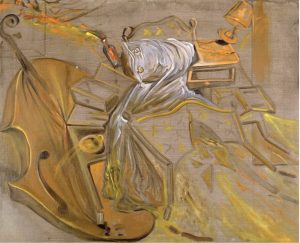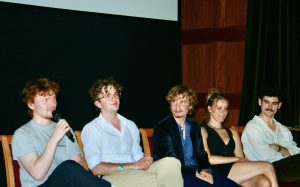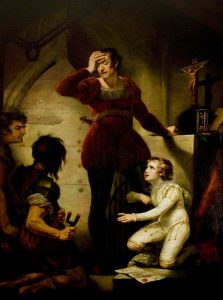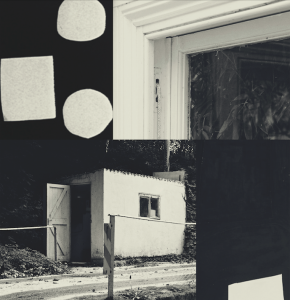The Athletic Artistry of Wrestling
by Albert Genower | February 7, 2024
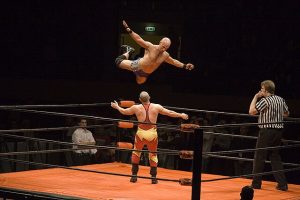
Philosopher and essayist Roland Barthes likened it to the theatre of antiquity and the plays of Racine and Molière. Record producer Rick Rubin called it “storytelling taken to the next level”. To someone with little or limited knowledge of it, it might at first appear odd to hear poetic figures talk of professional wrestling in such intellectual terms. But professional wrestling to many (and to me) is an art form like no other. It blends athleticism, storytelling, and theatricality in a wholly unique and fascinating way.
Let’s briefly establish some terminology. ‘Professional wrestling’ is a form of highly athletic theatre in which (usually) two performers engage in simulated combat, working together to create a spectacle that gives the illusion of genuine competition. The crowd knowingly plays along. Now, ‘wrestling’, more broadly, refers to the ‘real’ competitive sport that dates back far enough to be mentioned in the Book of Genesis. I’ll define ‘wrestling’ as the modern, mock-combat art form. Whether or not wrestling is a sport is up to individual discretion. For some, the athleticism required and the sports-like presentation of it qualifies it. For others, its nature as not genuinely competitive makes it theatre instead.
Artistically, the most interesting aspect of professional wrestling is the concept of kayfabe. David Schoemaker, a wrestling writer, defines kayfabe as “the wrestler’s adherence to the big lie, the insistence that the unreal is real—the rule that you have to play your character all the time, even outside the ring.” But it encompasses even more than this. Originally a word to keep wrestling’s predetermined nature a secret, now it refers to ‘playing along’.‘Kayfabe’ is when fans play along even though they know it’s scripted; it’s ignoring the fact that plenty of wrestling moves make no sense if you think about them. Kayfabe means the fans become characters in the wrestling performance, booing the villains and cheering the heroes. This all sounds a lot like a likely more familiar form of theatre: pantomime.
What’s the difference between wrestling and pantomime? The wrestlers are ostensibly playing themselves—they are always their characters. It’s when the lines of kayfabe and reality become obscured that wrestling as an art form excels. When the reality of the harsh and difficult-to-navigate backstage world of wrestling bleeds through to what the audience sees, even the most in-the-know fans struggle to tell what’s real and what isn’t. In 2011, when wrestler CM Punk ‘cut a promo’ (performed a monologue) lambasting the corporate and cutthroat nature of the WWE (at the time the only major wrestling company), it was a scripted part of the story, but it was also years of pent-up frustration finally spilling out in front of the fans’ very eyes. Born from his very real frustration came some of the most electrifying moments that wrestling had seen in nearly a decade.
The American giants of professional wrestling—WWE and AEW—have been increasingly dipping their toes into the UK market in the past couple of years, with sellout shows in London’s Wembley Stadium and Cardiff’s Principality Stadium. Underneath the glitz and glamour of these major promotions exists a world of independent wrestling—a circuit of grassroots companies, small but passionate audiences, and wrestlers who travel thousands of miles to participate in shows. One of these independent promotions is British Kingdom Pro-Wrestling, which runs wrestling shows across South West England, including in Oxford.
To a crowd of maybe a hundred people, wrestlers billed from Iran, Japan, America, and Britain tussle in a school sports hall in a show that (whilst much smaller) retained all the trappings of higher-budget wrestling. With flashy entrances and blisteringly loud music, bright lights, and championships—it’s an impressive spectacle for its relatively small scale. The show featured many international wrestlers, three of them working for Japanese promoter Dragongate Japan Pro Wrestling. These kinds of partnerships are key to small promotions, but incredibly risky. If all goes well, then it’s a mutually beneficial show for both the British promotion and the foreign wrestlers. However, the company has to pay upfront to fly the wrestlers and pay them for their appearance before any ticket sales are guaranteed. The risk paid off at the Oxford show, with a full house of enthusiastic onlookers, but not all shows are blessed with this good fortune.
The crowd is an odd assortment of people (one of the wrestlers I spoke to said that the only common ground fans share is that they’re all “oddballs”). Families are there with very enthusiastic children, there’s a smattering of college puffers dotted around, and then there’s a few hardcore wrestling fans (replica championships in hand). Matches on the card include a bout between the feral-looking Wild Boar (real name Michael Hitchman, from South Wales), and Saime ‘The Silverback’ Sahin, who effortlessly captures the hearts of the children in attendance with his effervescent entrance and energetic performance. He moves with a speed and fluidity that simply should not be possible for a man of his size and stature. The whole show is great, hitting all the beats you’d expect for a solid indie wrestling show. Formerly known as 4FW, the company is re-emerging after a four-year lockdown-induced hiatus. Over the years, they have featured many superstar wrestlers, such as Rey Mysterio and Kenny Omega.
The most experienced and noteworthy wrestler on the cards in Oxford is the wiry American performer Brian Kendrick. He’s wrestled for some of the most noteworthy promotions around the world, and, despite his fame, loses to Plymouth native Chris ‘The Stallion’ Bronson. The first thing Kendrick mentions to me is Roland Barthes’ 1957 essay collection Mythologies, which looks at how modern myth is developed from culture and features a chapter titled The World of Wrestling. Barthes talks about wrestling as a kind of modern myth. Kendrick tells me that he subscribes to this view—that wrestling acts as a theatrical microcosm for life, in which the heel (wrestling jargon for villain) becomes “an avatar for your boss or the asshole at work”. Despite the physical toll wrestling takes on the body (and he’s been doing it full-time since 1999), it’s the theatricality that defines his job, not the athleticism.
Our conversation, somewhat inevitably, steers towards the predetermined nature of wrestling, which Kendrick bluntly summarises as “no fucking shit.” He compares wrestling to Shakespeare productions. The way he sees it, Shakespeare’s plays fundamentally haven’t changed in content for over 400 years, and are just as staged as wrestling. He gestures towards me as he says this like he thinks all students in England live with their heads buried in Elizabethan texts. While theatre may be the most popular comparison for those trying to intellectualise wrestling, Kendrick believes ‘stand-up comedy’ is closest to what he does. Onstage, they both rely heavily on the interplay between the audience and the performer, and depending on how that interplay goes, the performance itself can be tailored on the spot to accommodate the way a crowd is feeling. A play is a play, the story beats must go a certain direction, but stand-up and wrestling are different. For independent wrestlers, the similarities between the two are even closer: small venues, your life’s work for a hot dog and a handshake, and, worst of all, the travel.
Gruelling, painful, endless travel can make or break a wrestler. Whilst the wooden planks of the ring, the thumbtacks, light tubes, steel chairs, barbed wire, and even fire take an immense toll on the bodies of these people, it is the road that presses the biggest weight upon their souls. A top-billed boxer might only fight three times in a year, whereas it’s not uncommon for wrestlers to have well over a hundred matches in the same time frame. Loneliness, separation from family, no rest for their battered and bruised bodies—for many in the business, it’s the miles that hurt the most. When I asked the founder of British Kingdom, David Sharp (himself a wrestler before he became a promoter ), about the challenging nature of the lifestyle, he told me that the physical toll was greater than the mental one for him. “At the very least”, he said, “you can mentally prepare yourself for the road ahead, but nothing can prepare you for the physicality of the job”. For a period in his 20s, Sharp was working as both a wrestler and a promoter, a workload so unbearable he felt like he was on the brink of a heart attack.
Luckily Sharp has been successfully running wrestling events for two decades now. But not all wrestlers are so fortunate. A study by Eastern Michigan University found that the mortality rates for wrestlers aged 34-54 were nearly three times greater than that of average American males. Looking at cardiovascular-related deaths, this number leaps to an astonishing 15 times above average. Major wrestling stars like Chyna, Eddie Guerrero, Andre the Giant, and The British Bulldog never saw their 50th birthday. Just last August, former WWE Champion Bray Wyatt died from a heart attack, aged only 36. There’s an entire Wikipedia page dedicated to listing premature wrestling deaths.
Wrestling is weird. Wrestler Cody Rhodes described the art as “just a bunch of guys play fighting in [their] underwear.” The way I see it, wrestling is emotional, fantastic, breathtaking, heartbreaking, and pretty camp. It’s a huge business: The Rock, John Cena, and Dave Bautista have all spawned successful Hollywood careers off the back of their wrestling success. Inversely, celebrities who love the art form occasionally wrestle themselves—if you want to see the theatrical power of wrestling, you need only watch rapper Bad Bunny make his entrance at WWE Backlash in his native Puerto Rico to a thunderous ovation.
Some think wrestling is too camp, others find it too violent, but for some, wrestling straddles that line perfectly. Nobody puts it better than Bryan Danielson, one of the world’s most technically gifted in-ring performers: “One thing I truly believe,” he said, “you show excellent professional wrestling to anybody and they’ll enjoy it, because excellent professional wrestling is fucking awesome.”∎
British Kingdom Pro-Wrestling’s training school, Brit King Pro Dojo, is open in Swindon.
Words by Albert Genower. Photo courtesy of Wikimedia Commons.

